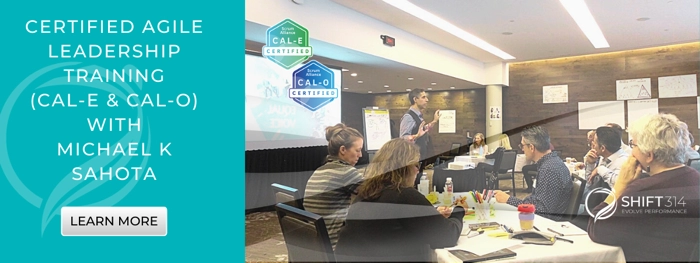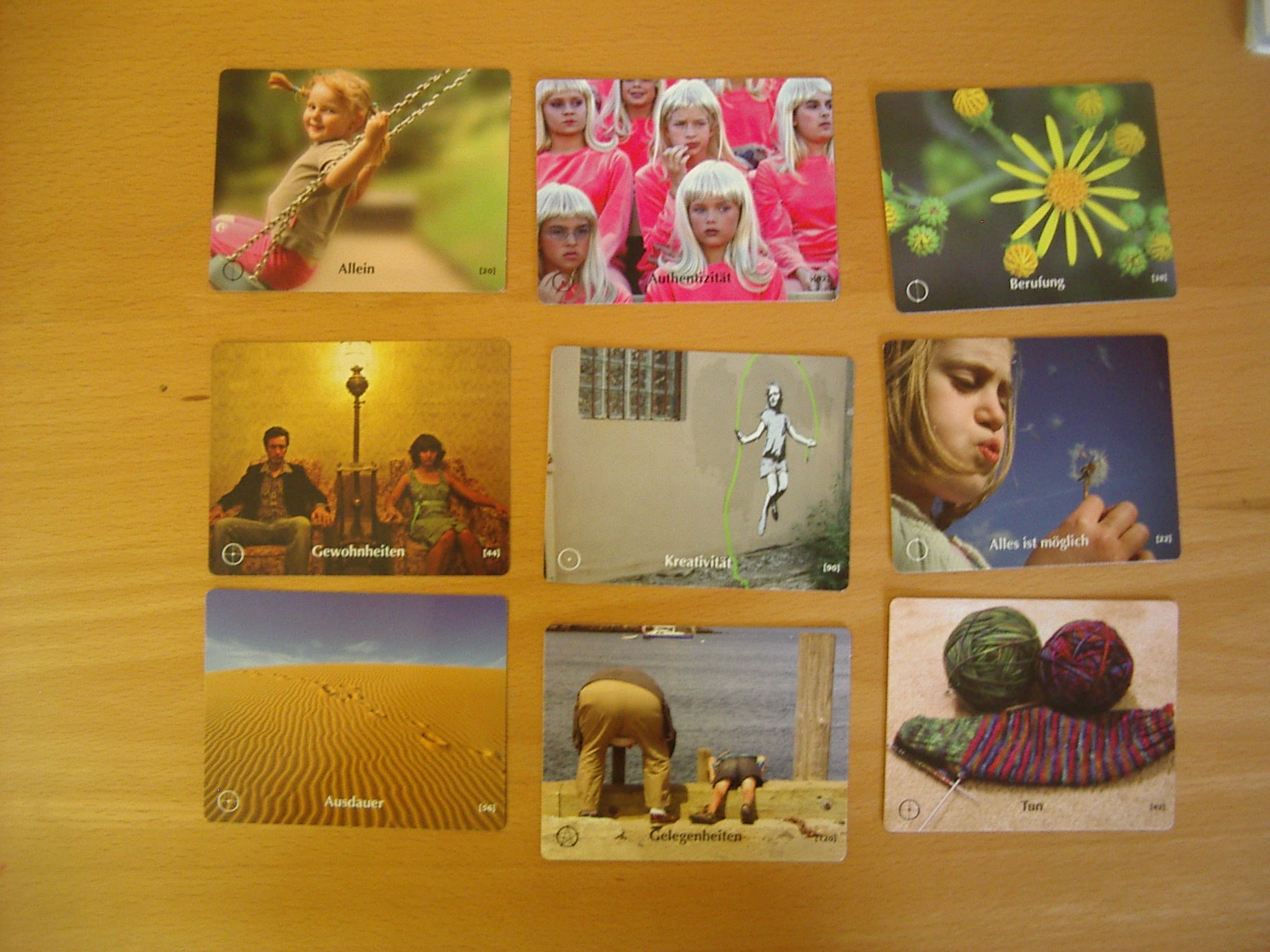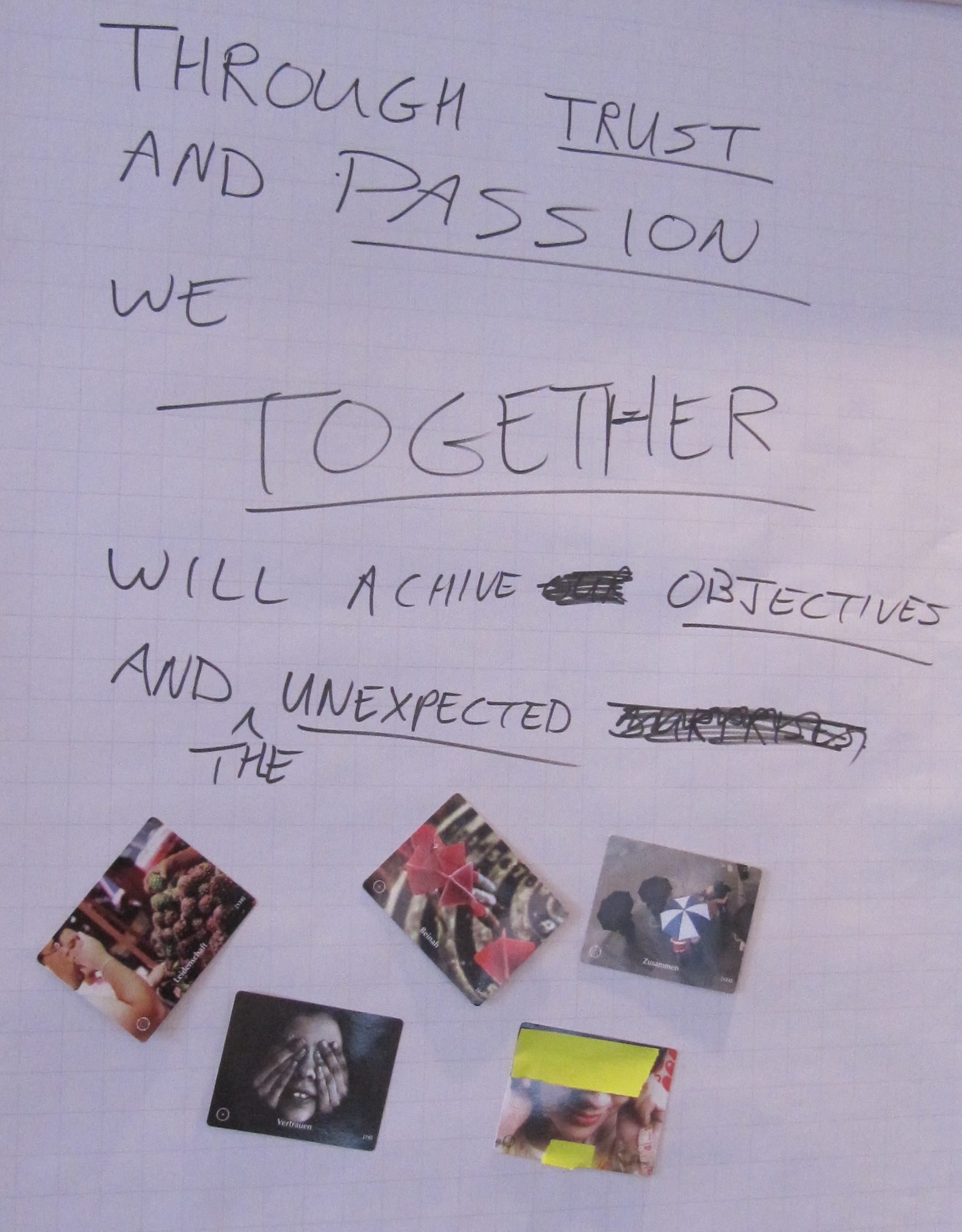This is a guest blog post co-written with Christine Neidhardt based on a session at Play4Agile conference on coaching with photos. The session was based on an experiment with the Points of You – Coaching Game (German link) to find ways to use the photo cards with a group or team. And we did.
Here is a photo of some of the cards scattered across the floor.

The one-on-one Coaching Game
The CoachingGame is used as a creative support material for coaches and offers a variety of possibilities to work with. We started with a public one-on-one coaching session to show one practical case how to use the CoachingGame and we were lucky that we had a person volunteering. We selected between four topics the game is offering:
- Relationships
- Winning and Loosing
- Mindfulness
- History, Present, Future
We decided for History, Present, Future. In a fishbowl arrangement, the practice client selected an important question for the session and we asked: what happened in the past, what happens now, what is the potential. The client selected three photos that represented each of the topics.
The cards do offer a photo, a word and a symbol. There is a companion book that explains each of the photos and provide stories to deepen the examination of the topic and offer additional perspectives and insights. There are five types of symbols (way, act, be, problems, opportunities) to which each of the cards belongs. Information which gives additional orientation. This together with an explanation cloth to position the cards to the questions, makes it all very comfortable to work with.
Creating Team Games
After the Coaching demo we formed two working groups to figure out how to use these cards in a group or team. This was the goal of the session and we came up with some pretty cool results in just 15 minutes.

Photo Reflection Game
One group created the photo reflection. We selected the Play4agile conference as topic and asked us, what was the past, present and what is the potential in the future. Everybody selected up to three cards. Everybody presented his cards to the group. The foto helped to explain and gave new ideas.
Past (first column): We as Coaches who love games realized we were often hold by old habits, felt alone with our ideas and had to endure through tough times in the day to day work.

Present (second column): The conference was the place to be at least authentic and to find people with the same mindset, where there occured many oppurtunities and creativity is in full bloom.
Future (third column): Putting the new games into action was one of our goals, as well as being open to all that is possible. All could happen. Lots of people from the conference would like to see games as a usual tool being used like techniques as Scrum. Some of the people found it possible that they would find their vocation in introducing games and the results of the conference in their daily work.
If we would have had more time, we could have gone deeper, could have agreed on some cards which would be the most important or we could have made as well the second part of the shared vision game.
The Shared Vision Game
The second group used the time to focus just on the last question: the future.
- Select the topic. In our case it was our future expectations of the conference. It could be for your team or project.
- Have everyone pick a card that resonates with them.
- Confirm that everyone is comfortable with the other cards. Some people did not understand the card I picked and after explaining what it meant for me, they were OK with it. I even changed the photo by covering up part to make our shared understanding of the meaning clearer.
- Create a statement that incorporates all of the ideas.
Our Shared Vision Statement
We somewhat unexpectedly created a powerful shared vision of our expectations of the conference.

What Can We Still Learn?
You see, there are unlimited possibilites and maybe we have now lots of more ideas how to work with these visual tools.
Why does this work?

Michael, as an NLP practitioner, is a big believer in the power of the unconscious mind. And photos tap right into our unconscious minds so we get to what is really important.
In the book How Customers Think, there is a great technique where customers bring in a photo that they feel relates to the product. When they explain the relationship they give very rich information about what is important and why. It’s a great book full of research on brains and decision-making.
The game with photos works the same way. We allow people’s unconscious to get in the game by selecting a photo. This is much deeper than just visual expression or writing on a sticky note.


